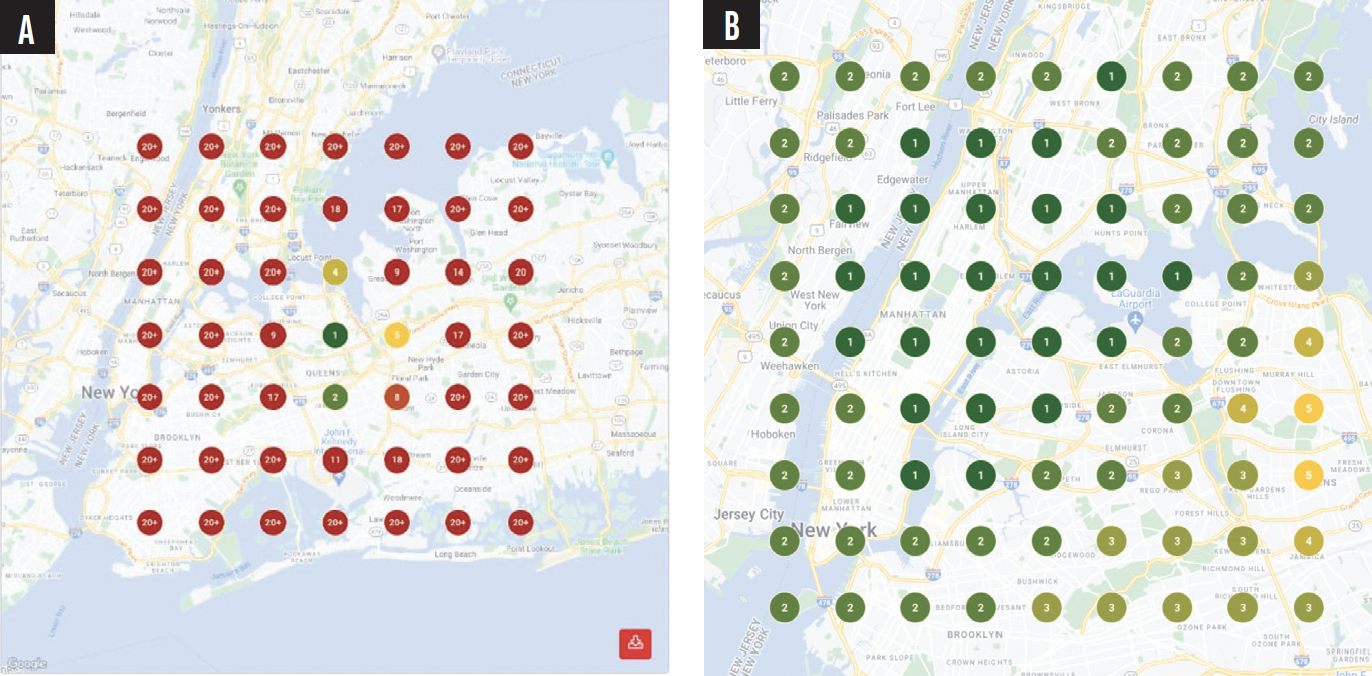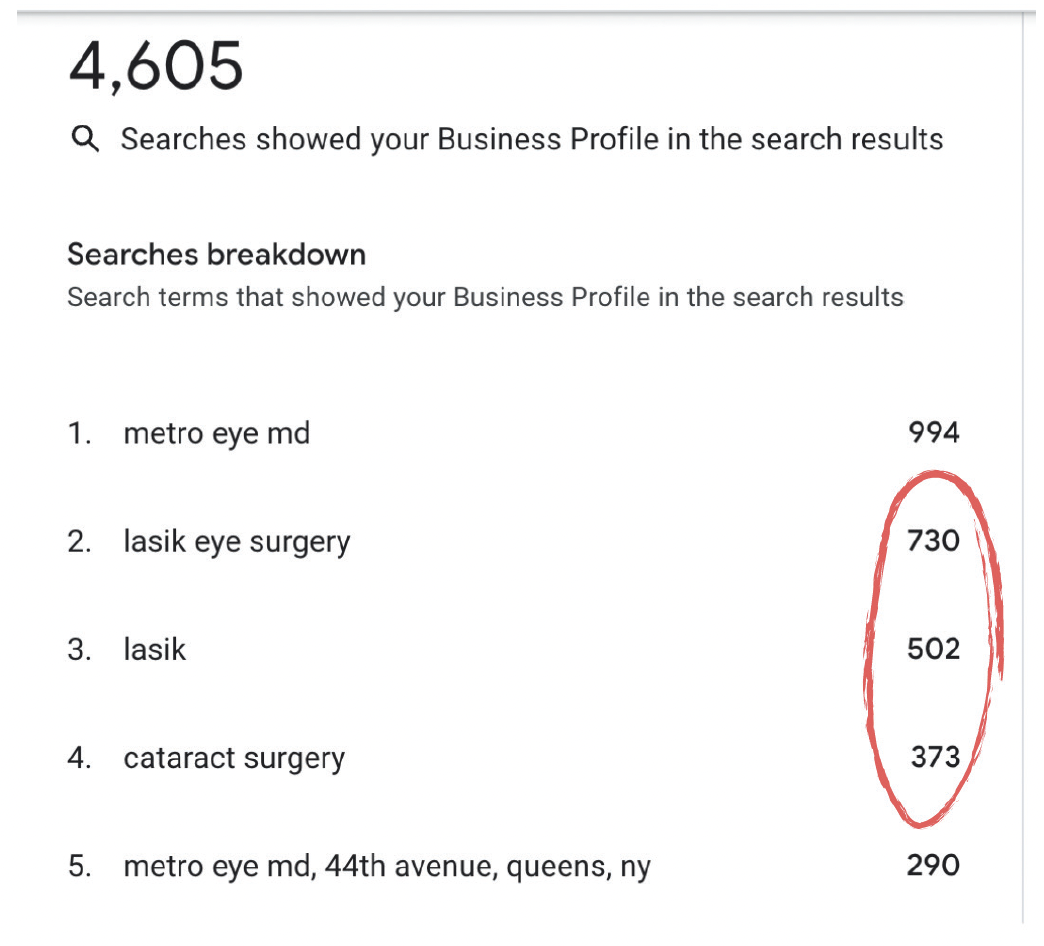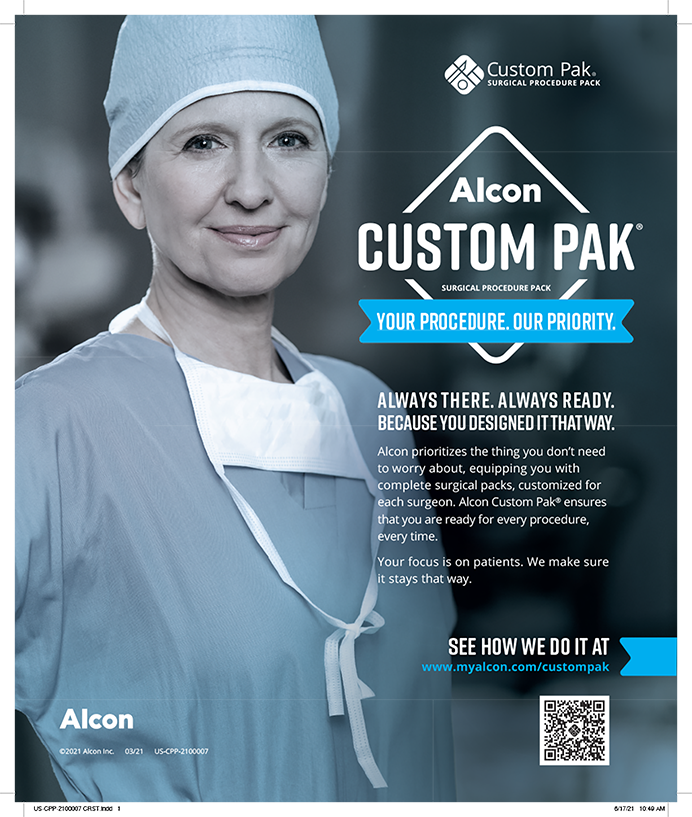
The success of today’s ophthalmology practices, particularly those focused on growing the premium cataract and refractive segments, depends on their online visibility through search engine optimization (SEO) on Google. SEO involves optimizing your website to improve its ranking in search engine results, which determines where it appears compared to your competitors’ sites when someone searches “LASIK near me.”
A couple of years ago, I was referred to a client who needed help with SEO. Nicholas J. Nissirios, MD, opened his surgery center in the summer of 2023. My team and I were confident we could help his practice rank well for top premium keywords such as LASIK and cataract surgery, but there was one major challenge: his location.
Dr. Nissirios operates in the most competitive market in the United States, New York City. Although he had an existing website, it was relatively new. He wanted to grow his premium refractive volume.
ANALYZING SEO STRATEGIES
Two Strategies
My team and I analyzed various SEO strategies and discovered something interesting. There are two primary SEO strategies—local and national—and they are quite different.
A local strategy ranks businesses based on local geography. An example would be a refractive surgery practice looking to attract new patients who live in the community. This makes sense. An example of a national strategy would be an e-commerce business trying to sell products directly to consumers across the country.
Our research found that a local strategy using Google’s Google Business Profile (GBP) product would be far more effective for Dr. Nissirios than a national strategy.
Leveraging GBP
GBP primarily affects your practice’s Google Maps ranking. If you perform a Google search in your city, you will notice that only the top three results on Google Maps appear on page 1. You have to click “more places” to view those ranked four to 100+. This means ranking your practice’s GBP is more difficult than ranking on page 1 for organic listings because it must be in the top three versus the top 10 of organic search results (Figure 1).

Figure 1. The top three Google Maps results appear on page 1 of a local search.
OPTIMIZING FOR LOCAL SEO
Think about the last time you looked up a local provider, such as a dentist for your family. You probably looked at Google Maps to see which was closest, then compared each by reviews.
We found that focusing the majority of our SEO efforts on optimizing the GBP listing rather than traditional SEO work (blogs, link building, technical SEO, etc.) not only helped a business rank higher in Maps but also pulled the organic ranking up with it.
Without a clear local strategy, posting blogs about generic search terms did not have the impact of a well-optimized GBP. For example, writing a blog titled, “Top 5 Reasons to Get LASIK,” does little to tell Google why it should rank one site over another at the local level. In the physical world, this would be the equivalent of putting up billboards for your practice all across the United States, even though it is a single-location practice in Des Moines, Iowa. Most people who see the billboard will never come in for a consultation because of the distance.
EFFECTIVE SEO STRATEGIES FOR OPHTHALMOLOGY
By optimizing our clients’ GBPs and websites and sending signals to Google specifically to show local authority, we were able to start taking over more of the Google Map area around our clients’ offices.
How Did It Work for Dr. Nissirios?
Figure 2A shows where Dr. Nissirios’ practice was ranked when we started in February 2023. After 10 months of working with him, his practice’s rankings had improved significantly (Figure 2B).

Figure 2. Dr. Nissirios’ initial Google Maps ranking in February 2023 shows limited visibility in a highly competitive market (A). The significant improvement in his Google Maps ranking after 10 months of optimized SEO efforts illustrates enhanced local visibility (B).
Impact on Practice and Patient Volume
What impact has the change in ranking had on Dr. Nissirios’ practice and patient volume? We can track calls from GBP, which have increased by 29.3% year over year (Figure 3). Additionally, we tracked the keywords prospective patients were using to find him. Figure 4 shows the top search terms.

Figure 3. Year-over-year increase of 29.3% in calls from GBP.

Figure 4. Top search terms used by prospective patients to find Dr. Nissirios.
Was It a Fluke?
We tested the same strategy with other clients across the United States. The results were encouraging. Even better, it did not take the typical 6 months to see improved SEO results. Figure 5A shows the results for month 1, Figure 5B shows the results for month 2, and Figure 5C shows the results for month 3.

Figure 5. SEO results after the first month of implementing local SEO strategies show initial progress (A). Continued improvement in SEO results during the second month reflects consistent optimization efforts (B). SEO results by the third month indicate sustained growth and increased visibility in local search rankings (C).
HOW SHOULD YOU OPTIMIZE YOUR GBP FOR RANK?
Complete Your Profile
The foundation of a high-ranking GBP is completeness. Ensure that your profile is comprehensive and up to date by following these steps:
- Step No. 1: Have a team member add updates a few times every month. Treat these updates like social media posts.
- Step No. 2: Examine your top competitors. Ensure that you post as frequently as they do and that your GBP is fully filled out with service lines (procedures you perform).
- Step No. 3: Add more pictures and videos than your competitors. Show Google that you are willing to put in more effort.
- Step No. 4: Focus on promoting the procedures you want Google to boost in a fun and engaging way. Avoid overly professional or medical descriptions. Instead, write as if you are providing explanations to friends or family.
Grow Your Reviews
Google reviews are crucial not only for potential patients but also for your GBP ranking. Cultivate more positive reviews and a steady increase in review numbers with the following techniques:
- Be consistent: Demonstrate to Google that your reviews are consistently increasing.
- Request reviews: There are many software solutions to help with this, but simply asking postoperative patients to post reviews can be effective.
- Designate a reviewer: Assign a team member to manage the review process. They should check in with patients during postoperative appointments to gather feedback. If the feedback is positive, have your team member use this script: “Awesome! The best part of my job is seeing people leave with the best vision they’ve had in years. I’m so excited for you! We’re trying to get the word out to our neighbors about our practice, and Google really likes it when they see recent reviews. Could you tap this card and leave one while you’re here? It would really help me out!” Use an NFC reader card so patients can tap their phone and be taken directly to your GBP to leave a 5-star review while they are still in the office.
Link GBP Descriptions to Pages on Your Website
Ensure your top procedures are listed on your GBP homepage with a description. Next, link these to internal pages on your website with detailed explanations. Write the content conversationally, as if speaking to friends or family. Avoid medical jargon.
Supply enough content to cover important points but keep it interesting. The goal is for prospective patients to read these descriptions, not to create filler.
CONCLUSION
Applying these strategies can greatly enhance your practice’s rank in local search results, attract more premium patients, and give you a competitive edge in the digital world. A well-optimized GBP can not only improve your business’ search rankings but also build credibility and trust with potential patients.




